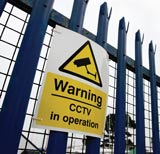
Q&A From the Top
A conversation with John Monti
- By Security Products Staff
- Jan 05, 2010
Manufacturers have recently begun promoting CCTV cameras with resolution specifications higher than 540 horizontal TV lines, implying that video security customers will benefit from enhanced resolution. These manufacturers are advertising cameras with specifications of 580, 600, 650 and even 700 HTVL.
But will an end user get more than 540 lines of resolution out of a typical CCTV installation? We sat down and talked with John Monti, vice president of marketing and business development of Pixim Inc., to find out.
Q. What is resolution in regard to CCTV cameras?
A. Resolution is the fineness of detail that can be distinguished in an image displayed on a video monitor. In the security industry, resolution is almost always specified in terms of HTVL.
What many fail to realize is that vertical TV lines are equally important in determining the total resolution of an image. Total resolution is the horizontal resolution multiplied by the vertical resolution.
Q. How do image sensors affect camera resolution?
A. There are two basic types of image sensors used in today's CCTV cameras: interlaced and progressive. Analog CCD cameras use interlaced capture, where half the image is captured in lines separated by noncaptured areas. The other lines are filled in during a second pass. The progressive capture approach, which is what Pixim's Digital Pixel System technology uses, captures every line of the image simultaneously. It's like taking a single snapshot of the whole scene.
Because of the capture method, CCD sensors use a process called linepair summation to minimize image fl icker. This technology, which acts as a low pass filter, decreases the effective VTVL by 25 percent. This means that a 480-line CCD has an effective vertical resolution of 360 lines and that the image's total resolution is decreased by 25 percent. Imager sensors that perform progressive image capture maintain the full vertical resolution, producing higher total resolution after recording as well as on initial display.
It's important to note that the way an image is captured is independent from how it is displayed. CCTV systems typically display video in an interlaced format, without regard to the capture technology being used by the camera. If you're deploying CCD-based cameras that capture images in an interlaced format, then you need to look for cameras with a minimum of 720 HTVL to match the total resolution of a camera that uses a 540 HTVL progressive capture sensor.
Q. How does a typical CCTV installation limit the benefit of cameras with more than 540 HTVL?
A. Display monitors are the first components in a CCTV system to limit the benefit. Monochrome or color monitors capable of displaying resolutions greater than 540 HTVL are expensive and not generally used in a CCTV system.
In a typical CCTV system, video is supplied to monitors through a composite video input. Using this standard input, NTSC and PAL color CRTs cannot deliver more than 540 HTVL. Even LCD monitors, which can display higher resolution when supplied by a digital high-resolution source, face the same resolution limits when supplied with composite video input.
Fundamentally, a composite video signal—the type provided by all analog CCTV cameras—is limited to 540 HTVL because of the input circuits built into CRT and LCD monitors. If a camera actually has a horizontal resolution of more than 540 HTVL, you won't see it on any monitor you would actually deploy.
The second CCTV system component to limit the benefit is the DVR. Currently, no CCTV DVR on the market is capable of recording more than 540 HTVL. Just like display monitors, DVRs have low-pass filters at their video inputs with the same negative impact to resolution.
Further, DVRs have video decoders at their input, which are used to convert the analog video signal into digital format. The conversion process samples the analog video and converts it to digital data in an industry-standard format. Horizontal resolution is limited to exactly 720 samples per horizontal line for both NTSC and PAL. The formula is simple: 720x75 percent equals 540 HTVL.
Q. How can an end user maximize resolution?
A. Cameras with a higher vertical resolution, such as a progressive- capture Digital Pixel System camera, will provide higher total resolution because video can be captured by the DVR and displayed on mainstream CRT and LCD monitors. Look for models that have resolution specifications of 540 HTVL, as well as a minimum of 450 VTVL.
Q. What do you see happening in the industry over the next five years in terms of camera resolution?
A. During the coming year, Pixim expects there to be significant marketing license around HTVL specs within the industry. Thus, cameras with 600 HTVL and greater will be marketed and sold. Unfortunately, these claims will taint the reputations of some suppliers since the benefits are not possible to achieve in actual CCTV systems.
For genuine, usable increases in resolution in CCTV systems, the only short-term alternative is increased vertical TV lines using progressive-scan image sensors. Beyond this, the industry must rely on more fundamental breakthroughs in system design to achieve higher usable resolution. One such technology is being promoted by the new HDcctv Alliance, which is specifying how HD-resolution cameras can be used to upgrade CCTV systems using existing coax cable to 720p and 1080p resolutions without the added cost and complexity of changing the entire system to a full IP network.
John Monti is the vice president of marketing and business development at Pixim Inc.